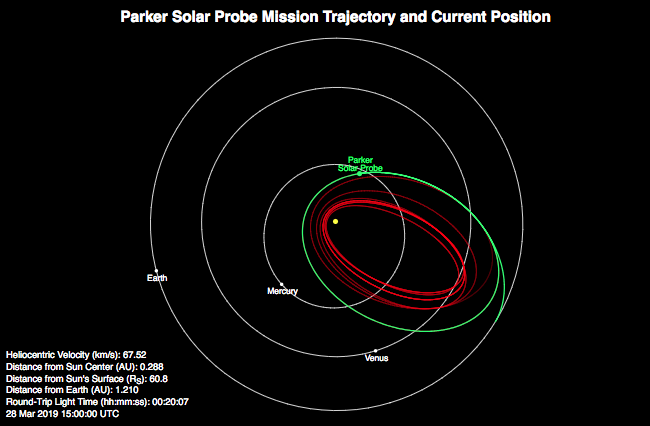Parker Solar Probe Approaches Second Solar Encounter
Posted on 2019-03-28 13:19:31On March 30, 2019, Parker Solar Probe begins the second solar encounter phase of its mission, culminating in its closest approach to the Sun, called perihelion, on April 4.
During this solar encounter phase, which lasts until April 10, the spacecraft's four suites of science instruments are fully operational and storing science data collected from within the Sun's corona. As designed, Parker Solar Probe will be out of contact with Earth for several days during the solar encounter. This allows the spacecraft to prioritize keeping its heat shield, called the Thermal Protection System, oriented towards the Sun, rather than pointing its transmitter towards Earth. Science data from this second solar encounter phase will downlink to Earth and arrive at the Parker Solar Probe mission operations center at the Johns Hopkins Applied Physics Laboratory in Laurel, Maryland over several weeks later in spring 2019.
Like the mission's first orbit, Parker Solar Probe will reach a perihelion of about 15 million miles from the Sun's surface — meeting its own record for closest-ever approach to the Sun, a little more than half the previous record distance of about 27 million miles set by Helios 2 in 1976. The spacecraft's top speed of about 213,200 miles per hour is also the same as the first solar encounter of the mission. In December 2019, Parker Solar Probe will perform the second of seven Venus gravity assists of its mission, setting up the trajectory that will carry the spacecraft closer to the Sun and to a higher top speed.

PreSolarEnc2WhereisPSP
Credit: NASA/Johns Hopkins APL
High-Res Image